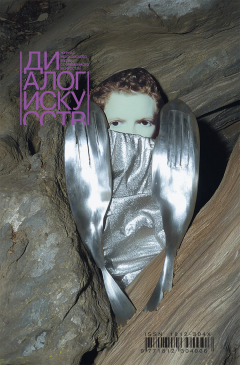|
|
Olga Deryugina: Can you name significant art figures who are undeservedly forgotten now but whose enlightenments would work well in a new digital reality?
Daniel Birnbaum: It’s a mysterious phenomenon when work of artists who didn’t draw any attention unexpectedly, after many years, is “discovered” existed all the times. For instance, the most noticeable example from my practice is a Swedish artist Hilma af Klint. She spent her entire life in obscurity and only after almost a hundred years since she had made her artworks the whole artworld started talking about her immediately. And it’s difficult to explain why this happened. I think the human kind simply wasn’t ready to accept her artwork earlier. I wonder if some authors are trying to make things that they can’t realize in terms of modern technical capacities. In fact, they predict the paths of future technologies’ development.
Deryugina: What do you think about the transformation of a traditional museum amid total digitalization? How does the perception of art change inside the digital realm?
Birnbaum: New technologies, which change the way people communicate with art pieces, appear every century. In the 21st century, this transformative potential belonged to a cluster of media we call “immersive.” It’s a virtual reality (VR), mixed reality (MR), and augmented reality (AR). Today we are only learning how to use these inventions and testing its toolkit. From the very beginning, Acute Art team questioned philosophical issues—we reflect on new forms of sensibility and perception. We were interested in what would happen if we asked famous artists to learn new technology.
Deryugina: What is the priority of new immersive technologies compared to the traditional museum? Birnbaum: New technologies change not only the very artwork but also the nature of institutional interactions. VR is a powerful media. It creates an absolutely overwhelming sense of reality. We can copy everything that people do in movies and real life by means of virtual reality. Installations and sculptures can be even much larger and more spectacular in VR. Using the geotags, we can “put” an artwork anywhere we want. Including the Kremlin or the White House. Augmented reality is suitable for interventions, street art and urban performances. Physical and digital realities get confused. Now digital images have such a high resolution that if one makes a picture with an ARintervention, no one can understand if this photo displays a real object or it’s just a two-dimensional fake. I guess this is the first step on the way to a new era of culture and art. And I’m sure that this technology will become very powerful soon.
Deryugina: Acute Art company aims to be seen by a wider audience but at the same time, it’s hard to call VR-technology itself affordable and inclusive.
Birnbaum: VR headsets are already getting cheaper than the ultimate smartphone model. Millions of people live in places where they have access to the internet but there are no art institutions or contemporary art collections. Of course my point of view is based on utopic vision but I believe that VR is leading us to the democratization of art. For example, if you want to watch Omni piece by Ai Weiwei, you need only a smartphone and cardboard glasses for VR which costs €1. Forty thousands of people watched this artwork during the first hour after it had been launched. I never had a vernissage attended by that bunch of viewers.




